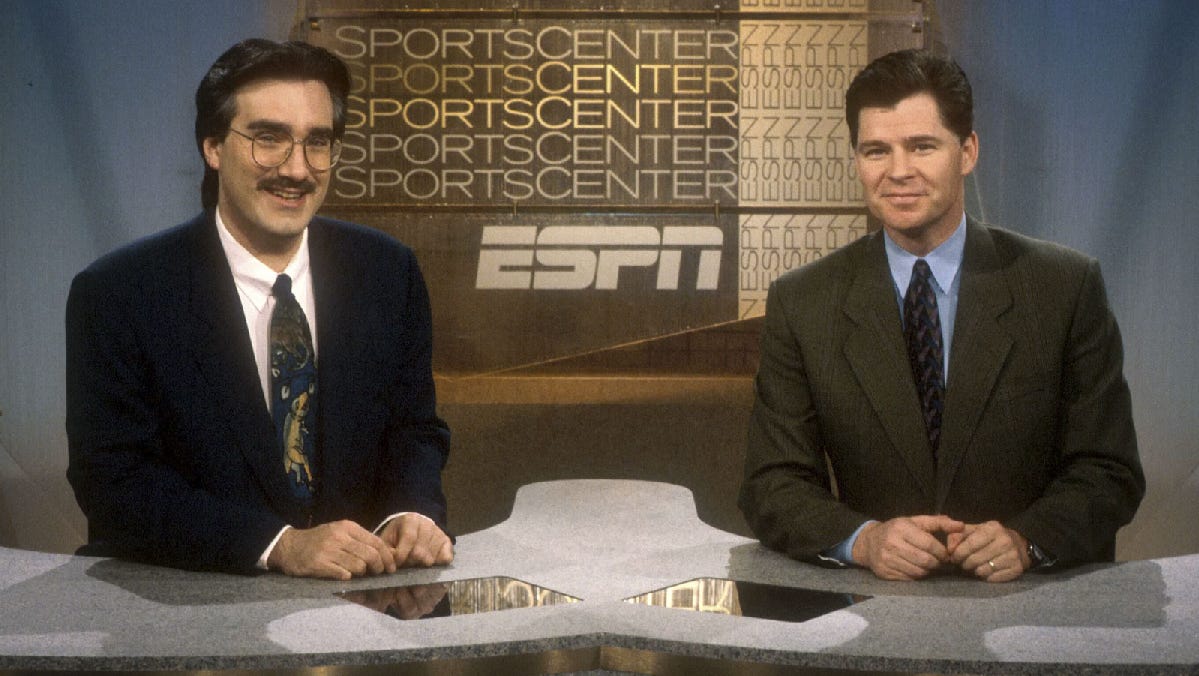Why the tech platforms lost interest in streaming live sports

Welcome! I'm Simon Owens and this is my tech and media newsletter. You can subscribe over here or just click on this handy little button:
For a brief moment in time, it seemed that the tech platforms were set to become major players in sports broadcasting. In 2016, Twitter won the rights to stream Thursday Night Football. A year later, Facebook bid $600 million for the online streaming rights for Indian Premier League. Not to be outdone, Amazon later bought the rights to stream both Thursday Night Football and the U.S. Open tennis tournament in the UK. Even Twitch got in on the action, securing the rights to the NBA’s minor league in 2017.
At the time, some wondered if the tech behemoths would eventually leverage their large audiences and even larger checkbooks to elbow their way into an industry dominated by traditional TV networks like ESPN, and in the process deal a final death blow to a cable industry that was already staring down the barrel of a cord-cutting apocalypse.
Flash forward a few years, and it now seems that tech’s move into sports broadcasting was little more than hype. A recent article from Digiday reported that, over the past several months, the platforms have taken a step back from the broadcast bidding wars, and instead are focusing on much smaller deals that don’t involve the actual live-streaming of games.
In fact, tech companies are now much more likely to launch shows in partnership with current broadcast rights holders. Facebook is paying Fox Sports to post to Facebook Watch, while Twitter has signed “deals to show sports footage from Univision, ESPN, CBC Sports, and Eurosport.” It’d be hard to argue at this point that Big Tech is playing a disruptive role in the broadcasting of live sports.
So why did the tech companies blink? A few reasons, the first being the inflated prices they were expected to pay. ESPN has spent years bidding up the cost of broadcasting rights, raising them to what many would consider unsustainable levels. It was able to do this because of a quirk in how it derives revenue from cable subscribers. When you pay your Comcast bill every month, up to $9 of it goes directly into ESPN’s coffers regardless of whether you watch ESPN. The same goes for virtually every other sports network.
What this means is that people who don’t watch sports, a demographic that makes up a larger portion of the population than sports watchers, have been subsidizing sports broadcasting to the tune of billions of dollars every year. This dynamic has propped up ESPN’s bottom line and allowed it to place ever more elastic bets on sports rights, doling out $6 billion a year to the NFL, NBA, and other leagues. So it shouldn’t be surprising that tech platforms aren’t excited about shelling out billions of dollars at price points that the market can’t sustain.
What’s more, the tech platforms are much more limited in how they can monetize sports broadcasts. Only 25% of ESPN’s revenue comes from advertising, yet most of the platforms would need to rely entirely on ads for their monetization. To which you might say, “But these platforms are amazing at generating ad revenue. That’s why they’re among the most profitable companies on the planet!”
Well sure, but the thing to remember is that most of the content that the platforms monetize is user generated and free. In cases in which they do pay content creators, it’s usually through a revenue share agreement, guaranteeing that their payouts never exceed their costs. Also, much of the content found on platforms like YouTube and Facebook Watch is evergreen in nature, meaning the platforms can run ads against it in perpetuity.
Live sports, on the other hand, are not only prohibitively expensive, with high fixed costs, but the vast majority of viewership will take place as the game is happening. So there’s a very small window of time in which the content can be monetized before it becomes virtually worthless. The hyper-targeted, niche ads that the tech platforms specialize in probably isn’t a good fit for this type of content delivery.
Hence why Big Tech has pared down its ambitions for live sports. By developing partnerships with TV broadcasters, tech companies don’t need to engage in expensive bidding wars, just pay a modest amount to get the TV networks to produce some tangential programming. This gives the networks additional marketing reach and some extra revenue for their troubles.
And while the tech platforms have backed away from traditional sports, they’re still all-in on esports, going to great lengths to secure broadcasting rights to esports competitions and sign exclusive streaming deals with gaming stars like Ninja and Shroud.
That’s because esports is a still-nascent market, one that hasn’t been distorted by ESPN’s unsustainable carriage fees. For instance, Twitch only had to pay $90 million to grab the rights of Season 1 and 2 of the Overwatch League, a far cry from the $2 billion that ESPN pays just to air Monday Night Football. And YouTube has shown by this point that gaming content is fairly evergreen, meaning it can be monetized long after the initial stream.
Does this mean that Big Tech will never play a role in broadcasting traditional live sports? My bet is that it’ll wade in eventually, but first it must wait for the current sports bubble to pop. For as long as non-sports fans are subsidizing Monday Night Football, its broadcasting rights will be overvalued. The tech platforms might have a lot of money to spend, but that doesn’t mean they’re willing to set it on fire.
***
Did you enjoy this newsletter? Then you should subscribe here:
Simon Owens is a tech and media journalist living in Washington, DC. Follow him on Twitter, Facebook, or LinkedIn. Email him at simonowens@gmail.com. For a full bio, go here.


